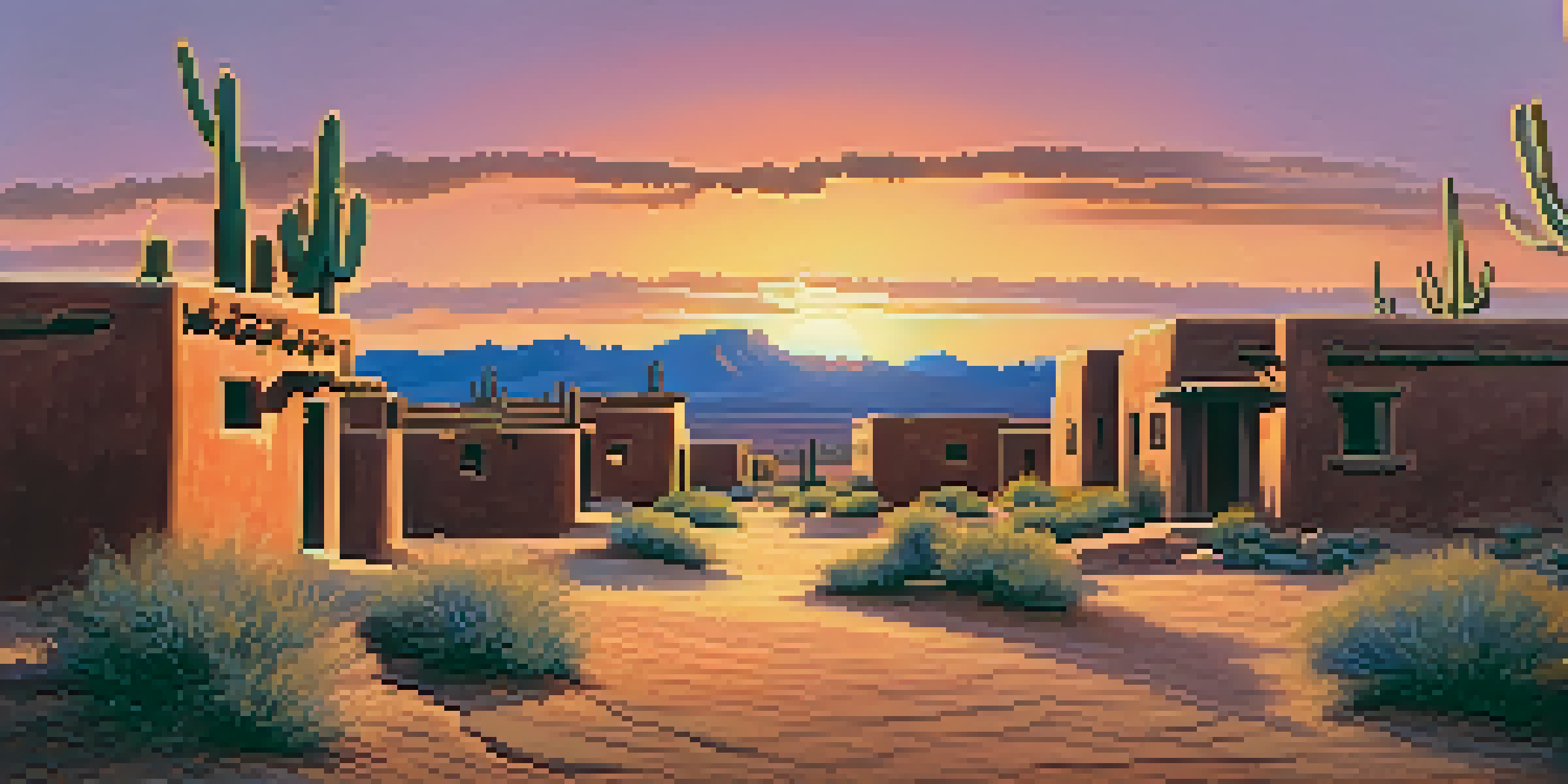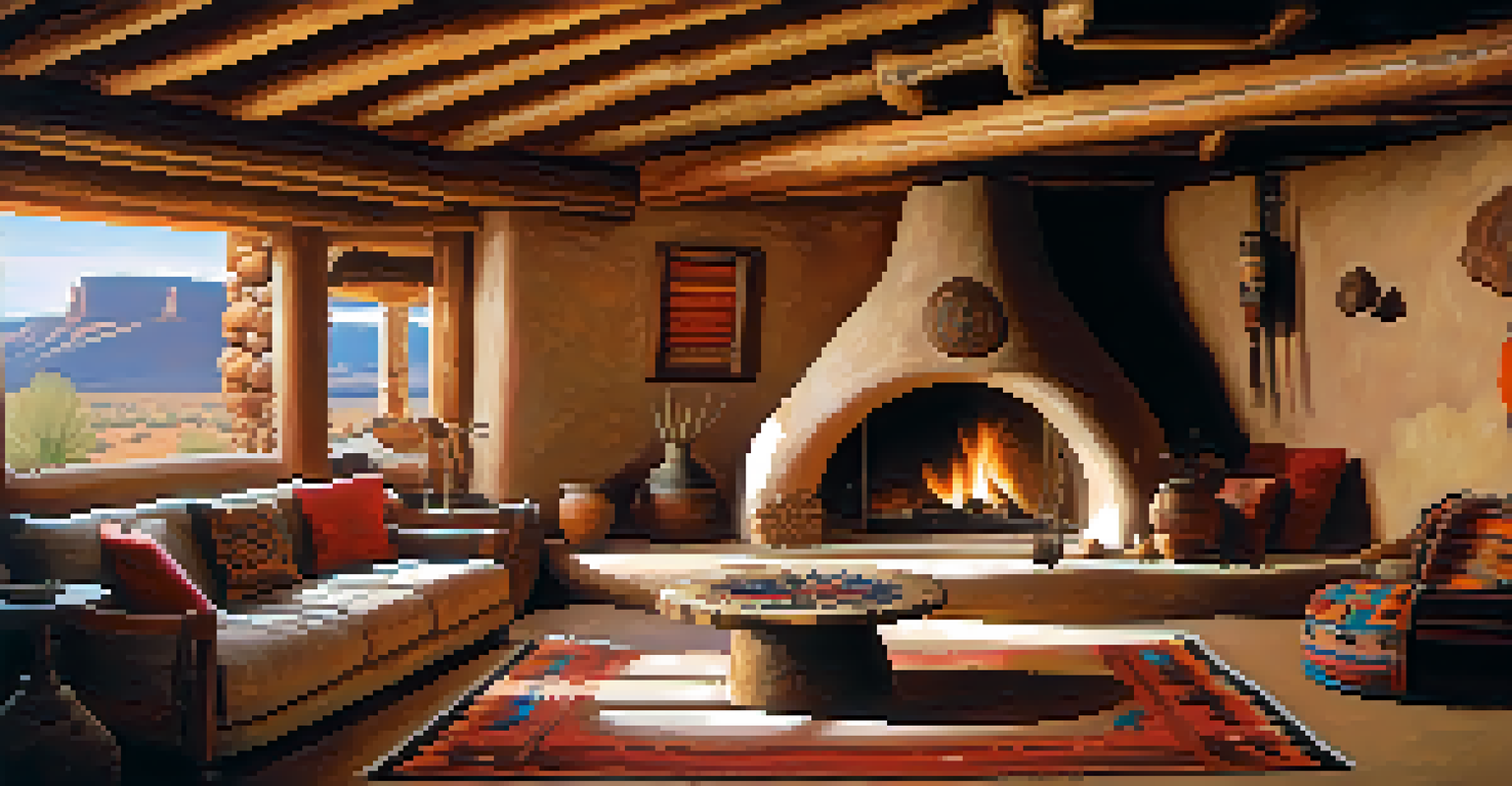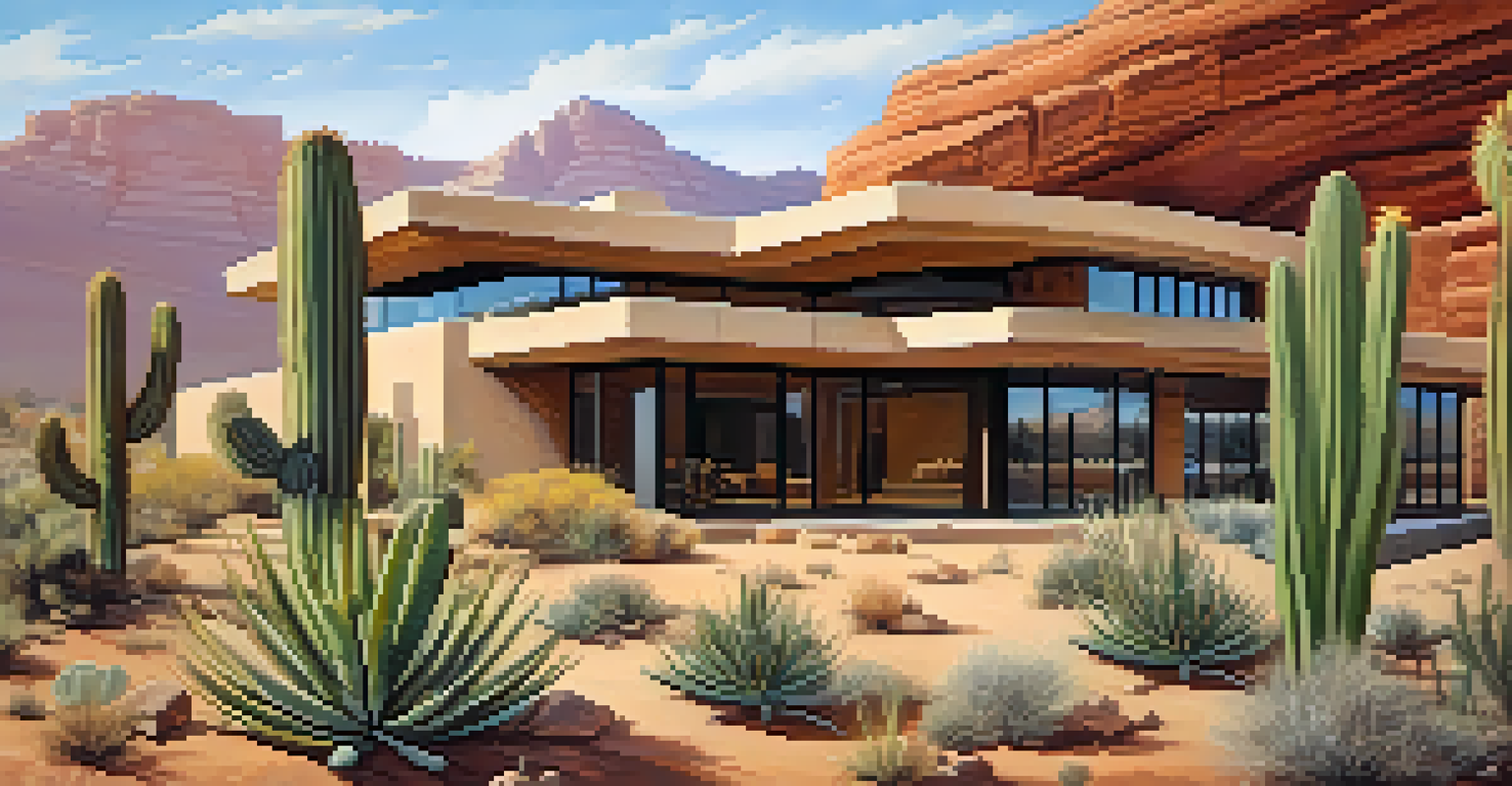Cultural Fusion: Native American Influence on Arizona Architecture

The Rich Tapestry of Native American Architecture
Native American architecture is a vibrant tapestry woven from the diverse cultural practices and traditions of various tribes. In Arizona, this is especially evident, with structures that reflect both practicality and spirituality. The use of adobe, stone, and wood embodies a deep connection to the land, showcasing how the environment influences building materials.
Architecture is a reflection of the culture that creates it.
One striking example is the use of adobe, which not only provides excellent insulation but also blends seamlessly with the arid landscape. This traditional method of construction is a testament to the ingenuity of Native peoples, who adapted to their surroundings over centuries. As we walk through Arizona, the earth-toned hues of adobe structures remind us of the natural beauty that surrounds them.
Furthermore, the architectural styles often incorporate elements of storytelling, with designs that symbolize cultural beliefs and historical events. This narrative quality invites both residents and visitors to engage with the culture on a deeper level, making architecture not just functional, but also a living expression of identity.
Key Native American Tribes Shaping Arizona's Architecture
Several Native American tribes have significantly influenced Arizona's architectural landscape, each bringing unique perspectives and styles. The Navajo, for instance, are known for their 'hogan' structures—simple yet functional homes that reflect their connection to the earth. These circular buildings are oriented to face the east, symbolizing the importance of the sunrise in their culture.

Similarly, the Hopi tribe has mastered the art of pueblo construction, characterized by multi-storied buildings made of adobe and stone. These structures are often adorned with intricate carvings and kachina motifs, representing spiritual connections and ancestral heritage. The Hopi's architectural designs serve not only as homes but also as community centers, reflecting their communal lifestyle.
Cultural Diversity Shapes Architecture
Native American architecture in Arizona reflects the rich cultural practices and traditions of various tribes, showcasing their unique materials and designs.
Additionally, the Apache tribe incorporates elements of nature into their building practices, using materials sourced from their surroundings to create efficient shelters. Their ability to adapt to various terrains showcases a practical approach to architecture that is still relevant today. Each tribe’s unique contributions create a rich architectural narrative across Arizona.
The Role of Nature in Native American Architecture
Nature plays an integral role in shaping Native American architecture, particularly in Arizona's desert environment. The natural landscape influences not just the materials used, but also the orientation and design of structures. For instance, many homes are built to maximize shade and cooling breezes, demonstrating a harmonious relationship with nature.
The land and its people are intertwined; to build is to honor the connection.
The use of local materials like stone and clay allows buildings to blend into the landscape, creating a sense of unity between human-made structures and the natural world. This approach is not merely aesthetic; it reflects a deeper understanding of sustainability and respect for the environment. By utilizing what is readily available, Native American architects have long embraced eco-friendly practices.
Moreover, many architectural features are designed to enhance the connection between the inhabitants and their surroundings. Large windows and open spaces allow for natural light and ventilation, fostering a sense of well-being. This integration of nature into living spaces underscores the importance of the environment in Native American life and architecture.
Modern Interpretations of Native American Design
In recent years, there has been a resurgence of interest in incorporating Native American design elements into modern architecture. Architects and designers are increasingly looking to these traditional practices for inspiration, blending contemporary styles with cultural heritage. This fusion not only honors the past but also brings unique character to modern buildings.
For example, many new structures in Arizona feature adobe walls and earth-toned materials that pay homage to Native building techniques. This approach creates a dialogue between old and new, allowing for an architectural narrative that respects tradition while embracing innovation. It's a way to keep cultural stories alive in a rapidly changing world.
Nature's Influence on Building Design
The natural landscape profoundly influences Native American architecture, guiding the choice of materials and the orientation of structures for sustainability.
Additionally, some modern buildings incorporate symbols and motifs from Native American cultures, creating a visual connection between the architecture and its cultural roots. This practice not only enriches the aesthetic but also invites conversations about heritage and identity. As we move forward, these interpretations help bridge the gap between generations and cultures.
Community and Cultural Significance in Architecture
Native American architecture is deeply intertwined with community and cultural significance. Many structures serve as gathering spaces for ceremonies, storytelling, and social events, emphasizing the importance of communal life. This aspect of architecture fosters a sense of belonging and shared identity among community members.
In Arizona, traditional and modern buildings alike often prioritize communal spaces, reflecting the values of cooperation and unity. For instance, many pueblos are designed with shared courtyards, encouraging interaction among residents. Such designs are a testament to the belief that architecture should facilitate connection and strengthen community bonds.
Moreover, the cultural significance of these structures extends beyond their physical presence. They serve as reminders of history, identity, and resilience, carrying the stories of the people who inhabit them. By valuing these architectural spaces, communities honor their past while paving the way for future generations.
Preserving Native American Architectural Heritage
Preserving Native American architectural heritage is crucial for maintaining cultural identity and history. Efforts to protect traditional building techniques and styles are ongoing, especially as urban development threatens historical sites. Various organizations and tribal leaders are working tirelessly to safeguard these integral aspects of culture.
One approach to preservation involves educating younger generations about traditional practices and values. By passing down knowledge of construction methods, materials, and cultural significance, communities ensure that their architectural heritage continues to thrive. Workshops and community events serve as platforms for this knowledge exchange, fostering a sense of pride and responsibility.
Preservation of Architectural Heritage
Efforts to preserve Native American architectural heritage are vital for maintaining cultural identity, emphasizing education and collaboration among communities.
Additionally, collaborations between architects, historians, and Native communities are essential in revitalizing and restoring traditional structures. These partnerships not only aim to preserve the past but also adapt it to contemporary needs. Through this collaborative effort, the architectural narrative of Native American cultures will endure, enriching Arizona's landscape for years to come.
The Future of Native American Influence on Architecture
Looking ahead, the influence of Native American culture on architecture in Arizona is poised to grow even stronger. As awareness of cultural heritage increases, more architects are seeking to incorporate indigenous designs and philosophies into their projects. This trend reflects a broader societal shift towards valuing diversity and sustainability in architectural practices.
Incorporating Native American principles can lead to innovative designs that prioritize harmony with nature and community engagement. Future architectural projects may increasingly utilize sustainable materials and techniques inspired by traditional practices, promoting environmental stewardship. This fusion of old and new holds the potential to reshape the architectural landscape.

Furthermore, as more tribes engage in discussions about their cultural narratives, we can expect to see a greater representation of these stories in the architecture of public spaces. This shift not only honors the heritage of Native peoples but also enriches the cultural fabric of Arizona, fostering a deeper appreciation for the diverse histories that shape our built environment.